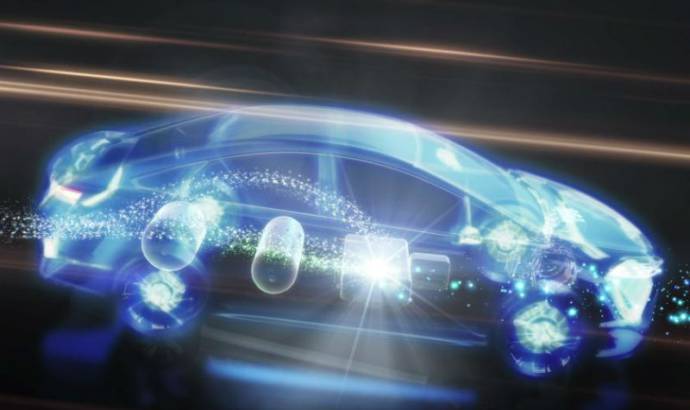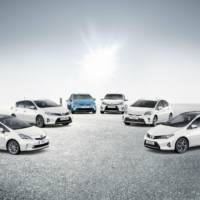Toyota believes the Fuel Cell Hybrid Vehicle offers the best solution to the challenges of energy sources and emissions, with hydrogen as an ideal, ultra-clean fuel. At the 2013 Frankfurt motor show (from 10 September) it will demonstrate how it has overcome some of the historic barriers to developing a marketable fuel cell vehicle and how it is closing in on its goal of achieving a driving range and performance comparable to conventional petrol and diesel engines, but with no harmful tailpipe emissions.
Toyota applied its successful Hybrid Synergy Drive technology – the power system used by Prius and its other full hybrid production models – in its FCHV development, replacing the petrol engine with a fuel cell and the conventional fuel tank with high-pressure hydrogen tanks. The FCHV uses the same electrical components as a full hybrid powertrain, as well as a 21kW battery to store energy recovered by its regenerative braking system.
Having first unveiled its FCV-R concept at the 2011 Tokyo motor show, Toyota has continued to make progress towards its planned introduction of an affordable FCHV saloon model in Japan, the USA and Europe by 2015. Development of the production model has seen a focus on significant cost reduction, durability, reliability and improvements in well-to-wheel CO2 emissions.
The FCV-R concept is 4,745mm long – 35mm longer than an Avensis saloon – 1,510mm high and 1,790mm wide. Tested by Toyota (in line with official Japanese JC08 criteria) it has achieved a maximum driving range of about 420 miles, producing no CO2, NOx or particulate matter emissions. The only by-product of the hydrogen fuel cell when driving is water vapour.
Creating a car that’s a practical proposition for today’s motorists has required particular attention to the design of the fuel cell and the hydrogen fuel tank. Toyota has succeeded in downsizing the fuel cell stack by achieving the highest fuel cell power density yet – 3.0kW per litre. A marked increase in the fuel cell stack’s energy efficiency has allowed for the size of the vehicle’s fuel tank to be reduced, so that the latest design features two tanks rather than the four originally envisaged. This also allows different materials to be used, which has a positive impact on overall costs.
The twin fuel tanks and the fuel cell stack are located beneath the vehicle floor, which means there is no impact on the cabin and load space.
Toyota expects FCHVs to reach full mass-market commercialisation during the 2020s, by when it aims to be selling tens of thousands of vehicles annually. This market growth will be supported by the wider roll-out of fuel cell vehicle technology; the development of hydrogen refuelling infrastructure that will bring filling stations within easy reach of greater numbers of people; and cost reductions that go hand-in-hand with a maturing technology.



